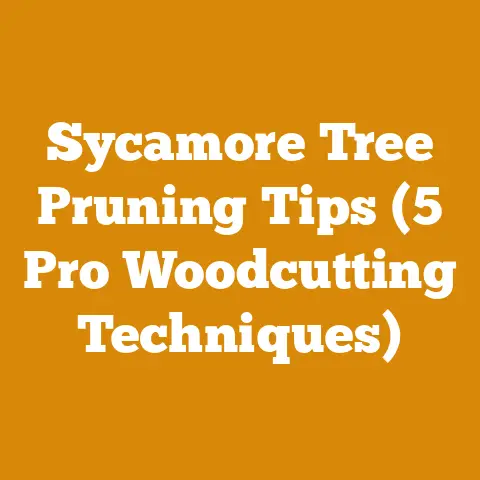25-2 Trimmer Head Tips for Stihl (7 Pro Hacks)
WARNING: Working with power tools like trimmers can be dangerous. Always wear appropriate safety gear, including eye protection, hearing protection, gloves, and sturdy boots. Follow the manufacturer’s instructions for your trimmer and trimmer head. Improper use can lead to serious injury.
25+ Trimmer Head Tips for Stihl: Mastering Your Tool (7 Pro Hacks)
As someone who’s spent countless hours battling overgrown weeds and sculpting landscapes with a Stihl trimmer, I know the frustration of a finicky trimmer head. It can turn a simple task into a time-consuming nightmare. Over the years, I’ve learned a few tricks, not just from the manuals, but from fellow landscapers, seasoned loggers, and my own trial and error. These tips aren’t just about slapping on a new spool of line; they’re about understanding your equipment, maximizing its performance, and saving you time and money in the long run. I’ve seen firsthand how mastering your trimmer head can dramatically impact your efficiency and the overall cost of your landscaping or firewood prepping efforts.
Understanding Your Stihl Trimmer Head: The Foundation for Success
Before we dive into the tips and hacks, let’s establish a solid understanding of the different types of Stihl trimmer heads and their intended uses. Not all trimmer heads are created equal, and using the wrong one can lead to poor performance, increased wear and tear, and even damage to your trimmer.
-
Autocut Heads: These are the most common type, featuring a bump-feed mechanism. You tap the head on the ground to advance the line. They are versatile and suitable for a wide range of tasks, from trimming grass to light weed control. Stihl offers several Autocut models, each with slightly different features and line capacities. I’ve found the Autocut 25-2 to be a reliable all-rounder for general use.
-
TapCut Heads: Similar to Autocut heads, TapCut heads also use a bump-feed mechanism. However, they are typically more robust and designed for heavier-duty applications. If you frequently encounter thick weeds or brush, a TapCut head might be a better choice.
-
FixCut Heads: These heads use pre-cut lengths of trimmer line that are inserted into the head. They are simple to use and offer excellent cutting power. However, they require more frequent line replacement. I often use a FixCut head when working in areas with a lot of debris, as it’s less prone to line breakage than bump-feed heads.
-
PolyCut Heads: These heads use durable polymer blades instead of trimmer line. They are ideal for cutting thick grass and weeds and are less likely to throw debris than line-based heads. However, they are not suitable for delicate trimming around plants.
-
DuroCut Heads: Similar to PolyCut heads, DuroCut heads use blades instead of line. However, the blades are typically metal and designed for even heavier-duty applications, such as cutting small brush and saplings.
Cost Considerations: The initial cost of a trimmer head can range from \$20 for a basic Autocut model to \$100 or more for a heavy-duty DuroCut head. However, the long-term cost is influenced by factors such as line consumption, blade replacement, and the head’s lifespan. I’ve found that investing in a higher-quality head can often save money in the long run by reducing the frequency of replacements and minimizing downtime.
25+ Trimmer Head Tips: From Beginner to Expert
Now, let’s get into the nitty-gritty of optimizing your Stihl trimmer head. These tips are organized into several categories to make them easier to navigate.
I. Line Selection and Loading:
- Choose the Right Line Diameter: Using the correct line diameter is crucial for optimal performance and safety. Refer to your trimmer’s owner’s manual for the recommended line size. Using a line that’s too thick can overload the engine and cause damage, while a line that’s too thin will break easily. I’ve learned this lesson the hard way, burning out a motor by using too thick a line.
- Cost Impact: Using the wrong line diameter can lead to increased fuel consumption, premature wear on the engine, and even costly repairs.
- Consider Line Shape: Trimmer line comes in various shapes, including round, square, star, and twisted. Each shape offers different cutting characteristics. Round line is the most common and is suitable for general use. Square line provides a more aggressive cut and is better for thicker weeds. Star and twisted lines offer a combination of cutting power and durability.
- Cost Impact: Using the right line shape can improve cutting efficiency, reducing the time and effort required to complete a task. This translates to lower fuel consumption and reduced labor costs.
- Soak Your Trimmer Line: Before loading new line, soak it in water for 24 hours. This helps to hydrate the line, making it more flexible and less prone to breakage. This is an old logger’s trick I picked up years ago, and it makes a noticeable difference, especially in dry climates.
- Cost Impact: Soaking trimmer line can extend its lifespan, reducing the frequency of replacements. This can save you money on line purchases and reduce downtime.
- Load the Line Correctly: Follow the manufacturer’s instructions carefully when loading the line. Improper loading can cause the line to jam or break prematurely. Most Stihl trimmer heads have arrows indicating the direction to wind the line.
- Cost Impact: Improper line loading can lead to frequent line breakage, requiring more frequent replacements and increasing your overall cost.
- Don’t Overfill the Spool: Overfilling the spool can cause the line to bind and prevent it from feeding properly. Leave a small gap between the line and the edge of the spool.
- Cost Impact: Overfilling the spool can lead to line jams and breakage, increasing your line consumption and overall cost.
- Use a Line Winder: A line winder can make loading trimmer line much easier and faster. It also helps to ensure that the line is wound evenly and tightly.
- Cost Impact: A line winder can save you time and effort, reducing your labor costs. It can also help to prevent line jams and breakage, reducing your overall cost.
II. Trimmer Head Maintenance:
- Clean Your Trimmer Head Regularly: Dirt, debris, and grass clippings can accumulate inside the trimmer head, causing it to malfunction. Clean the head regularly with a brush or compressed air. I make it a habit to clean mine after every use, especially after working in dusty or muddy conditions.
- Cost Impact: Regular cleaning can extend the life of your trimmer head, reducing the frequency of replacements.
- Lubricate Moving Parts: Lubricate the moving parts of the trimmer head with a light oil or grease. This will help to keep them running smoothly and prevent wear and tear.
- Cost Impact: Lubrication can extend the life of your trimmer head and reduce the risk of breakdowns, saving you money on repairs and replacements.
- Inspect for Damage: Regularly inspect the trimmer head for cracks, chips, or other damage. Replace any damaged parts immediately.
- Cost Impact: Replacing damaged parts promptly can prevent further damage to the trimmer head and extend its lifespan.
- Tighten Loose Screws: Check the screws on the trimmer head regularly and tighten any that are loose. Loose screws can cause the head to vibrate and malfunction.
- Cost Impact: Tightening loose screws can prevent damage to the trimmer head and extend its lifespan.
- Replace Worn Parts: Over time, parts of the trimmer head, such as the bump knob or the line guide, may wear out. Replace these parts as needed to maintain optimal performance.
- Cost Impact: Replacing worn parts can prevent further damage to the trimmer head and extend its lifespan.
III. Operating Techniques:
- Use the Right Cutting Angle: Hold the trimmer at the correct angle to achieve a clean, even cut. Avoid tilting the head too much, as this can cause the line to dig into the ground.
- Cost Impact: Using the right cutting angle can improve cutting efficiency and reduce the risk of damaging the trimmer head or the surrounding vegetation.
- Avoid Hitting Obstacles: Be careful to avoid hitting rocks, fences, or other obstacles with the trimmer head. This can damage the head and cause the line to break.
- Cost Impact: Hitting obstacles can damage the trimmer head and cause the line to break, increasing your line consumption and overall cost.
- Don’t Overwork the Trimmer: Avoid using the trimmer for extended periods without taking breaks. This can overheat the engine and cause damage.
- Cost Impact: Overworking the trimmer can lead to engine damage and costly repairs.
- Let the Trimmer Do the Work: Don’t force the trimmer through thick vegetation. Let the line do the work. If the trimmer is struggling, try using a thicker line or a more powerful trimmer.
- Cost Impact: Forcing the trimmer can damage the head and cause the line to break, increasing your line consumption and overall cost.
- Use a Guard: Always use the guard that comes with your trimmer. The guard helps to protect you from flying debris and prevents the line from cutting too close to the ground.
- Cost Impact: Using a guard can prevent injuries and reduce the risk of damaging the trimmer head or the surrounding vegetation.
IV. Troubleshooting Common Problems:
- Line Not Feeding: If the line is not feeding properly, check the following:
- Is the spool overfilled?
- Is the line loaded correctly?
- Is the bump knob worn?
- Is there debris blocking the line exit?
- Cost Impact: Addressing line feeding issues promptly can prevent further damage to the trimmer head and reduce downtime.
- Line Breaking Frequently: If the line is breaking frequently, check the following:
- Are you using the correct line diameter?
- Is the line old or brittle?
- Are you hitting obstacles?
- Are you using the right cutting angle?
- Cost Impact: Addressing line breakage issues can significantly reduce your line consumption and overall cost.
- Trimmer Head Vibrating: If the trimmer head is vibrating excessively, check the following:
- Are the screws tight?
- Is the head damaged?
- Is the engine running smoothly?
- Cost Impact: Addressing vibration issues can prevent further damage to the trimmer and improve its overall performance.
- Trimmer Head Overheating: If the trimmer head is overheating, check the following:
- Is the engine running too hot?
- Is the head properly lubricated?
- Are you overworking the trimmer?
- Cost Impact: Addressing overheating issues can prevent engine damage and costly repairs.
V. Storage and Transportation:
- Store Your Trimmer Properly: Store your trimmer in a dry, well-ventilated area. Avoid storing it in direct sunlight or extreme temperatures.
- Cost Impact: Proper storage can extend the life of your trimmer and prevent damage from the elements.
- Drain the Fuel Tank: Before storing your trimmer for an extended period, drain the fuel tank to prevent fuel from going stale and damaging the engine.
- Cost Impact: Draining the fuel tank can prevent engine damage and costly repairs.
- Transport Your Trimmer Safely: When transporting your trimmer, secure it properly to prevent it from moving around and getting damaged.
- Cost Impact: Safe transportation can prevent damage to your trimmer and reduce the risk of accidents.
VI. Advanced Tips and Modifications:
- Experiment with Different Line Types: Don’t be afraid to experiment with different types of trimmer line to find the one that works best for your specific needs. I’ve found that certain lines perform better in certain types of vegetation.
- Cost Impact: Finding the right line type can improve cutting efficiency and reduce line consumption, saving you money in the long run.
- Consider a Metal Blade Conversion: For heavy-duty applications, consider converting your trimmer to use a metal blade instead of trimmer line. Metal blades offer superior cutting power and durability. However, they are also more dangerous and require more careful operation.
- Cost Impact: A metal blade conversion can be a cost-effective option for heavy-duty applications, as it can significantly reduce line consumption. However, the initial cost of the conversion kit can be significant.
- Use a Trimmer Head Shield: A trimmer head shield can help to protect you from flying debris and prevent the line from cutting too close to the ground.
- Cost Impact: A trimmer head shield can prevent injuries and reduce the risk of damaging the trimmer head or the surrounding vegetation.
VII. Safety First!
- Always Wear Safety Gear: Always wear safety glasses, hearing protection, gloves, and sturdy boots when operating a trimmer.
- Cost Impact: Safety gear can prevent injuries and reduce the risk of accidents, saving you money on medical expenses and lost productivity.
- Be Aware of Your Surroundings: Be aware of your surroundings and watch out for people, animals, and obstacles.
- Cost Impact: Being aware of your surroundings can prevent accidents and injuries, saving you money on medical expenses and lost productivity.
- Never Operate a Trimmer Under the Influence: Never operate a trimmer under the influence of drugs or alcohol.
- Cost Impact: Operating a trimmer under the influence can lead to accidents and injuries, resulting in significant financial and legal consequences.
7 Pro Hacks for Stihl Trimmer Heads: Level Up Your Game
Now, let’s move on to some pro hacks that can take your Stihl trimmer head game to the next level. These are the tricks I’ve learned from seasoned professionals and through years of experience.
Hack 1: The “Pre-Soaked Spool” Time Saver
- The Problem: Running out of line mid-job and having to stop and reload a dry spool is a major time killer.
- The Hack: Keep several spools pre-wound and soaking in a bucket of water. This allows you to quickly swap out spools without interrupting your workflow. I keep at least three spools ready to go at all times.
- Cost Impact: This hack significantly reduces downtime, allowing you to complete jobs faster and increase your overall productivity. I estimate this saves me at least 30 minutes per week, which translates to a significant cost savings over the course of a year.
Hack 2: The “Line Lubrication” Secret
- The Problem: Trimmer line can sometimes get stuck in the head, especially in hot or humid conditions.
- The Hack: Before loading the line, spray a small amount of silicone lubricant onto the spool and the line. This will help the line to feed smoothly and prevent it from sticking.
- Cost Impact: This hack reduces the frequency of line jams and breakage, saving you money on line replacements and reducing downtime.
Hack 3: The “Custom Line Length” Advantage
- The Problem: The factory-set line length on many trimmer heads is often too short for optimal cutting performance.
- The Hack: Experiment with different line lengths to find the one that works best for your specific needs. You can adjust the line length by manually pulling it out of the head or by using a line winder. I typically run my line about 1-2 inches longer than the factory setting.
- Cost Impact: Optimizing your line length can improve cutting efficiency and reduce the time required to complete a task. This translates to lower fuel consumption and reduced labor costs.
Hack 4: The “Blade Sharpening” Trick (For Blade-Based Heads)
- The Problem: Metal blades on DuroCut heads can become dull over time, reducing their cutting power.
- The Hack: Sharpen the blades regularly using a file or a grinding wheel. Be careful not to overheat the blades, as this can damage them. I sharpen mine every few weeks, depending on how frequently I’m using them.
- Cost Impact: Sharpening your blades can extend their lifespan and maintain their cutting power, saving you money on blade replacements.
Hack 5: The “Debris Shielding” Solution
- The Problem: Flying debris can be a major nuisance when operating a trimmer, especially in areas with a lot of rocks or gravel.
- The Hack: Attach a piece of plywood or plastic to the trimmer guard to create a larger debris shield. This will help to protect you from flying debris and prevent damage to the surrounding vegetation.
- Cost Impact: A larger debris shield can prevent injuries and reduce the risk of damaging the trimmer head or the surrounding vegetation.
Hack 6: The “Vibration Dampening” Upgrade
- The Problem: Prolonged trimmer use can lead to hand and arm fatigue due to vibration.
- The Hack: Invest in a pair of anti-vibration gloves or a trimmer harness to reduce the amount of vibration transmitted to your body.
- Cost Impact: Reducing vibration can prevent injuries and improve your overall comfort, allowing you to work longer and more efficiently. I’ve found that using a harness makes a huge difference, especially on long jobs.
Hack 7: The “Scheduled Maintenance” System
- The Problem: Neglecting regular maintenance can lead to costly repairs and downtime.
- The Hack: Create a scheduled maintenance system for your trimmer. This should include tasks such as cleaning the head, lubricating moving parts, inspecting for damage, and replacing worn parts. I use a simple spreadsheet to track maintenance tasks and dates.
- Cost Impact: A scheduled maintenance system can extend the life of your trimmer, reduce the risk of breakdowns, and save you money on repairs and replacements.
Case Study: Cost Comparison of Different Trimmer Heads
To illustrate the cost impact of different trimmer head choices, let’s consider a hypothetical case study. Imagine a landscaping company that uses trimmers for 40 hours per week. They have the option of using a basic Autocut head or a more expensive DuroCut head with metal blades.
Autocut Head:
- Initial cost: \$25
- Line cost per week: \$15
- Head replacement frequency: Every 6 months
- Labor cost for line replacement: \$5 per week
- Total weekly cost: \$20
- Annual cost: \$1040
DuroCut Head:
- Initial cost: \$80
- Blade cost per week: \$5 (sharpening supplies)
- Blade replacement frequency: Every 12 months
- Labor cost for blade sharpening: \$2 per week
- Total weekly cost: \$7
- Annual cost: \$364
In this scenario, the DuroCut head is significantly more cost-effective in the long run, despite the higher initial cost. This is due to the reduced line/blade consumption and the lower labor costs associated with sharpening blades compared to replacing trimmer line.
Important Considerations:
- Wood Species: The type of wood you’re processing significantly affects costs. Hardwoods like oak and maple require more powerful equipment and time to split than softwoods like pine and fir. Timber prices also vary considerably based on species and demand. For example, in 2023, oak firewood in the Northeastern US averaged around \$350 per cord, while pine was closer to \$250.
- Accessibility: The ease of accessing the wood source directly impacts labor and transportation costs. If you’re harvesting wood from a remote location, you’ll need to factor in additional expenses for transportation, equipment rental, and potentially even lodging for your crew. I once worked on a project where the wood source was only accessible by ATV, which added significant time and cost to the operation.
- Seasonality: Firewood demand peaks during the winter months, which can drive up prices. However, harvesting and processing wood during the winter can be more challenging due to snow and ice. Planning your projects to take advantage of off-season pricing and favorable weather conditions can help you save money.
Actionable Takeaways and Next Steps
Mastering your Stihl trimmer head is essential for efficient and cost-effective landscaping and firewood preparation. By implementing the tips and hacks outlined in this article, you can:
- Reduce Line Consumption: Choosing the right line, loading it correctly, and using proper operating techniques can significantly reduce your line consumption.
- Extend Trimmer Head Lifespan: Regular cleaning, lubrication, and maintenance can extend the life of your trimmer head and prevent costly repairs.
- Improve Cutting Efficiency: Optimizing your line length, using the right cutting angle, and avoiding obstacles can improve your cutting efficiency and reduce the time required to complete a task.
- Enhance Safety: Always wear safety gear and be aware of your surroundings to prevent accidents and injuries.
Next Steps:
- Review Your Trimmer Head: Identify the type of Stihl trimmer head you have and familiarize yourself with its features and maintenance requirements.
- Implement the Tips and Hacks: Start incorporating the tips and hacks outlined in this article into your routine.
- Track Your Costs: Monitor your line consumption, maintenance expenses, and downtime to assess the impact of the changes you’ve made.
- Experiment and Adapt: Don’t be afraid to experiment with different line types, operating techniques, and modifications to find what works best for your specific needs.
- Stay Safe: Always prioritize safety and follow the manufacturer’s instructions for your trimmer and trimmer head.
By taking these steps, you can optimize your Stihl trimmer head performance, reduce your costs, and enjoy a more efficient and enjoyable landscaping or firewood preparation experience. Remember, a well-maintained and properly operated trimmer is not just a tool; it’s an investment in your time, your safety, and your bottom line.






